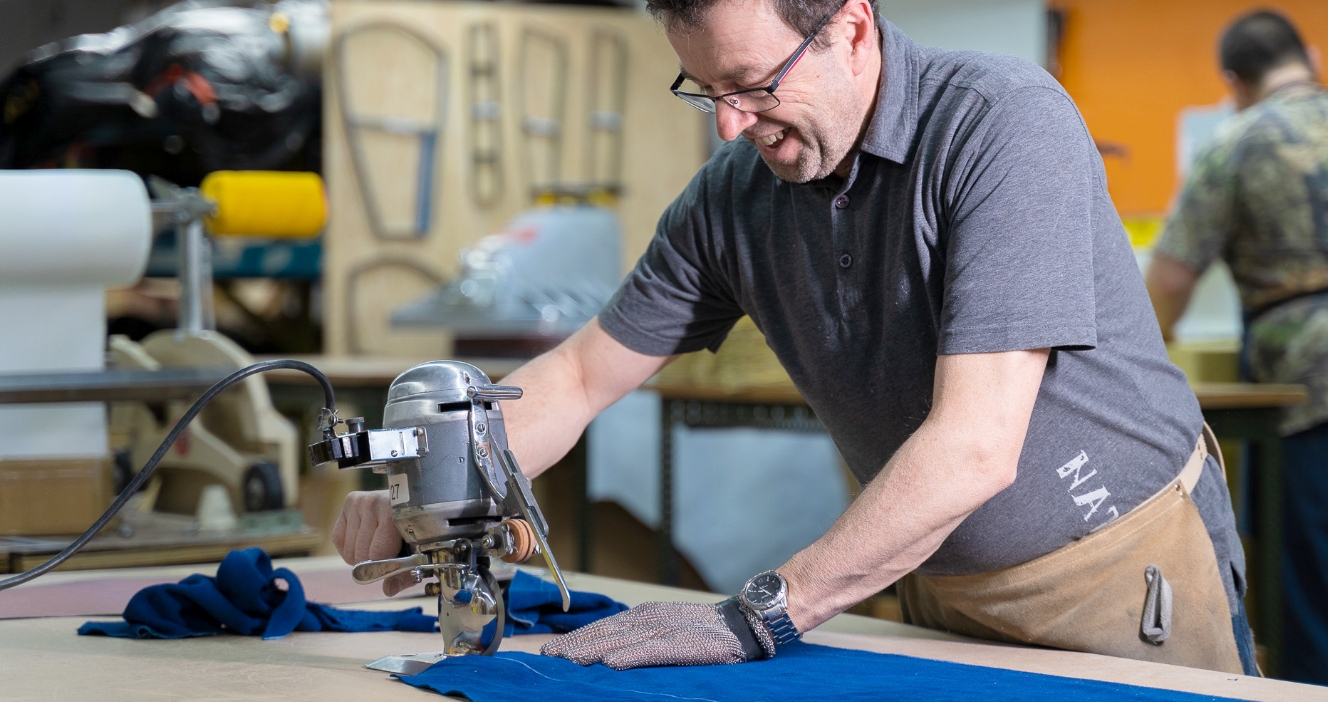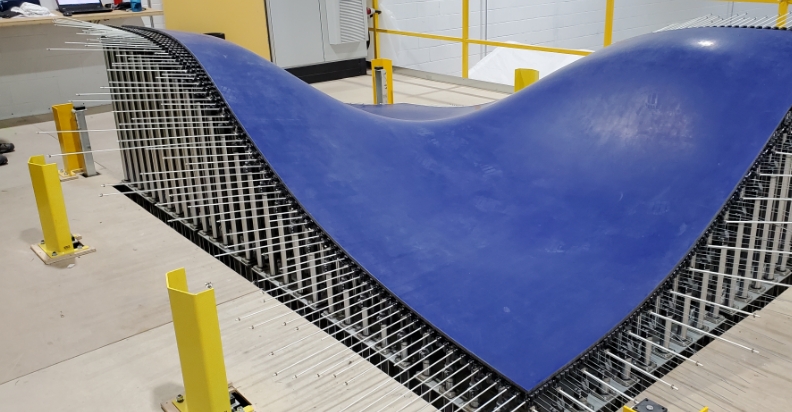A Thriving Industry
Canadian companies in the technical textile industry have earned an outstanding reputation for their expertise along with the quality and performance of their products and services. The industry’s development is based on in-depth knowledge of industrial needs and processes, supported by extensive R&D activity. Its specialized products are fully integrated into the local supply chain and favourably positioned in international markets.
1 700 Companies
17 600 Jobs
2.07 Billions in exports





An Export Champion

A Culture of Innovation

Reliability and Quality at the Heart of Our DNA
Canadian technical textiles contributing
to all cutting-edge sectors

Agriculture and Fishery
Over time, technical textiles have been incorporated into various kinds of traditional equipment to make them more effective and lightweight. The fishing industry uses agrotextiles for nets, ropes and lines in order to increase their resistance. In agriculture and horticulture, they’re found in a wide range of applications to protect crops (from the climate, weeds, sunlight or animals), promote plant growth (controlling the ripening of crops or soil humidity), protect the harvest or form bales of hay.

Home Textiles
Textiles have always been an important part of this market segment. And while the basic functions of these products remain the same (carpeting, screen, furnishing, mattress, bedding, drapery, cushion, etc.), the advent of technical textiles has greatly contributed to improving their durability and delivered many performance- and comfort-related advantages.

Construction
Technical textiles have found numerous applications in the construction industry. Their insulating and sometimes acoustic properties, lightness and durability allow them to be used in the construction of buildings, walls and roofing. They provide a superior alternative to traditional materials such as asbestos that pose health risks. They’re also used to protect and shelter workers while on job sites.

Packaging and Containment
Technical textiles are gradually revolutionizing the packaging sector by providing solutions that enable safer transportation and an ideal conservation environment for many products. Often more eco-friendly than traditional packaging products, these textiles are found in packaging for food (absorbent pads, mesh bags, bee-wraps, etc.) or products for agriculture, and their use is now widespread in the mail and parcel delivery sector (bags, pallet covers and other insulated packaging).

Ecological Protection Textiles
The environmental benefits related to the use of technical textiles may be integrated into all sectors of activity. In agriculture, for instance, they make it possible to decrease water loss during spraying and reduce the use of pesticides. Since they are usually more lightweight, they help to reduce the environmental footprint associated with transportation. In general, technical textiles offer applications and properties that deliver improved environmental performance.

Civil Engineering
The use of technical textiles for civil engineering projects is growing rapidly. No wonder, since the environmental and economic benefits associated with their use are unprecedented. They are involved in the creation of high-performance geotextiles, geogrids and geomembranes, which are used in road, bridge and railway construction, along with many other civil engineering projects.

Clothing Components
Technical textiles are used more and more in the clothing industry because they add value to finished products (uniforms, clothing, shoes and accessories). Stain and odour resistance, waterproofness, durability, lightness, breathability and elasticity are just some of the qualities they provide which are sought by today’s consumers.
Synthetic fibres are ideal, since in some cases their performance is superior to natural fibres. For example, the insulating properties of certain textiles enable better resistance to extreme temperatures.
Of course, without technical fibres, threads and fabrics, the creation of “smart” or “connected” clothing would be impossible.

Industrial Products and Components
The use of technical textiles for industrial purposes is extremely widespread. This type of textile may be found in many industrial products including filters, conveyor belts, abrasive strips, lining for printed circuits, and waterproof joints and membranes, to name a few.

Medical and Hygiene Textiles
A wide range of technical textiles are used in various medical and hygiene-related contexts. They’re often found in the form of surgical products, such as medical scrubs, privacy curtains, sterilization pouches, bandages, sutures and orthopedic pads and garments. They’re also used in the manufacturing of wipes, diapers and many hygiene and incontinence products for adults.

Protective and Safety Clothing or Textiles
Personal protective equipment (PPE) is clothing and accessories intended to protect people against the risks incurred in dangerous situations, such as wars (soldiers), riots (police) and fires (firefighters). In carrying out their duties, these people may encounter hazardous or harmful elements, materials or incidents. PPE products are often supported by testing standards or legislation relating to health, safety and hygiene. The technical properties of these garments and ancillary accessories (helmets, goggles, masks, etc.) may provide ballistic and chemical protection, resistance to heat/flames and cuts, and high visibility.

Sport and Leisure
In the context of sport, technical textiles are primarily used in the production of high-performance apparel, but they have a wide range of other applications. You’ll find technical textiles in various types of sporting gear, such as rackets, golf clubs and fishing rods. They also have a strong presence in equipment for outdoor activities (tents, backpacks, etc.). They’re being used more and more as a highly effective ground covering for soccer fields and other sports surfaces.

Transport Textiles
The automobile, civil and military aviation, rail and maritime transportation industries use technical textiles and fibres to manufacture carpeting, seats, tires, propellers, seatbelts, airbags and more. Many composite materials and components may be found in cockpits and engine compartments or in structural parts made of mineral or aramid fibres, whose resistance is markedly superior to steel.
Join the manufacturer
ambassadors of the sector
Newsletter
Follow the industry news
Web site by Riposte


